Hesi Biology Proctored Exam
Hesi Biology Proctored Exam
Total Questions : 24
Showing 10 questions Sign up for moreThe urinary bladder and the internal reproductive organs are found in which cavity?
Explanation
The urinary bladder and internal reproductive organs, including the uterus, ovaries, and testes, are in the pelvic cavity. The pelvic cavity is a bony structure formed by the pelvis and contains the terminal portions of the digestive tract, urinary tract, and reproductive tract. It is situated inferior to the abdominal cavity and is separated from it by the pelvic brim, which is a rim of bone formed by the iliac crests, sacrum, and pubic bones. The pelvic cavity is bounded by the pelvic bones and the pelvic diaphragm and is lined with the pelvic peritoneum.
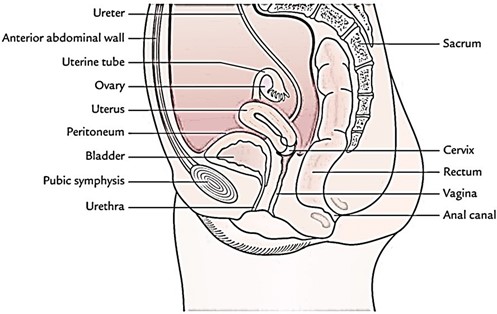
Anaerobic respiration can lead to a burning sensation caused by which molecule?
Explanation
During anaerobic respiration, some living systems use an organic molecule as the final electron acceptor. Processes that use an organic molecule to regenerate NAD+ from NADH are collectively referred to as fermentation. One type of fermentation is lactic acid fermentation, which produces lactic acid (lactate) and NAD+1. The accumulation of lactic acid can lead to a burning sensation in muscles during intense exercise.

What occurs when the sympathetic nervous system is stimulated?
Explanation
When the sympathetic nervous system is stimulated, it activates the "fight or flight" response, which prepares the body for physical activity or stressful situations. This response includes several physiological changes, such as:
Increased heart rate and cardiac output: The sympathetic nervous system releases adrenaline and noradrenaline, which increase heart rate and cardiac output to provide more oxygen and nutrients to the muscles.
Decreased uterine activity: The sympathetic nervous system inhibits uterine contractions to prevent
premature labor.
Decreased pancreatic activity: The sympathetic nervous system inhibits insulin secretion and promotes glucagon secretion to increase blood glucose levels.
Decreased gastrointestinal activity: The sympathetic nervous system inhibits digestive functions to divert blood flow to the muscles.
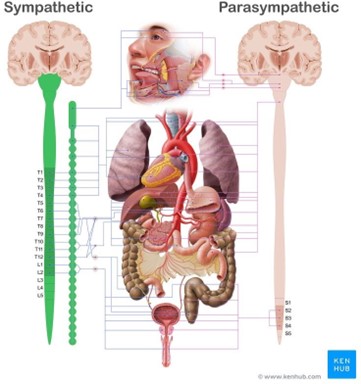
The pulse point located behind the knee is palpated over which artery?
Explanation
The popliteal artery is located behind the knee and is one of the major arteries that supplies blood to the leg and foot. Palpating the pulse in this artery can be done by pressing firmly on the area behind the knee, just below the crease. It is important to note that palpating the pulse in this area can be more difficult than other pulse points, as the artery is deep and surrounded by other structures such as muscle and bone.
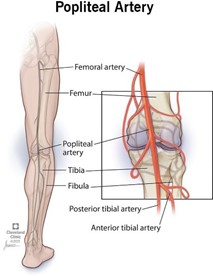
Which anatomical structure houses the malleus, incus and stapes?
Explanation
The malleus, incus, and stapes are three small bones, collectively known as the ossicles, located in the middle ear. These bones work together to transmit sound waves from the eardrum to the inner ear, where they are converted into nerve impulses that are then sent to the brain. The malleus is atached to the eardrum, the incus is in between the malleus and the stapes, and the stapes is connected to the inner ear. Together, they form a chain that amplifies the sound waves and transmits them efficiently to the inner ear.
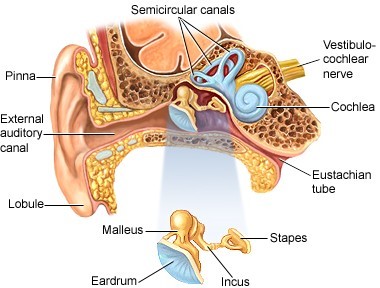
What cavity of the heart normally has the thickest wall?
Explanation
The left ventricle of the heart normally has the thickest wall, which is composed mainly of cardiac muscle tissue (myocardium). The left ventricle has to generate enough force to pump oxygen-rich blood to the rest of the body through the systemic circulation, which requires greater muscular effort than the right ventricle, which pumps blood only to the lungs via the pulmonary circulation. The thickness of the left ventricular wall ensures that it can withstand the pressure required to generate this forceful contraction.
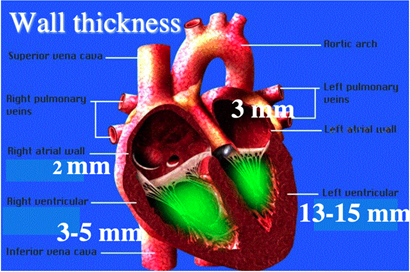
Where does digestion begin in the digestive system?
Explanation
Digestion begins in the oral cavity, also known as the mouth, where food is ingested and broken down into smaller pieces through mechanical digestion by the teeth and chemical digestion by enzymes in saliva, such as amylase. Once the food is sufficiently broken down, it forms a bolus and is then swallowed, passing through the esophagus and into the stomach. In the stomach, the food is further broken down by stomach acid and enzymes before passing into the small intestine for the absorption of nutrients.
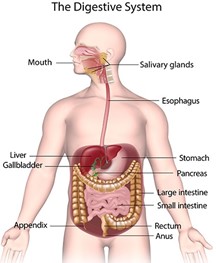 |
If you broke the distal end of two bones that articulate the carpals, which bones did you break?
Explanation
The bones that articulate with the carpals are the distal end of the radius and the distal end of the ulna. These two bones form the wrist joint with the carpals. Therefore, if you break the distal end of both the ulna and radius, it will result in a wrist fracture. This type of injury is also known as a distal radius and ulna fracture.
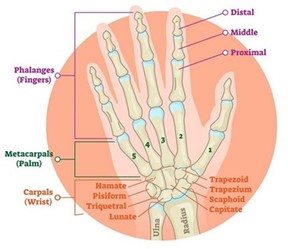
Which of the following statement best describes endocrine glands?
Explanation
Blood then carries them to target cells or organs throughout the body. Hormones are chemical messengers that help to regulate various physiological processes such as growth, metabolism, and reproduction. Unlike exocrine glands (option a), which secrete their products into ducts that carry them to external surfaces such as the skin or digestive tract, endocrine glands have no ducts and release their secretions directly into the circulatory system. Salivary glands (option d) are exocrine glands that secrete saliva into ducts leading to the mouth. Option b is also incorrect as it does not accurately describe endocrine glands.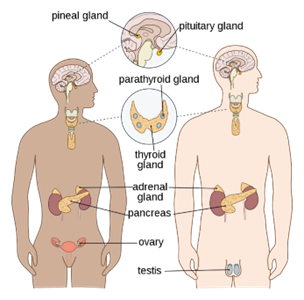
Which hand position describes the anatomical position of a person who is standing erect with two feet forward?
Explanation
The anatomical position is a standardized reference position used to describe the human body. In this position, the person stands erect with their feet together and their arms at their sides, with the palms of the hands facing forward (anteriorly). This position is used as a reference for describing the location of different parts of the body.
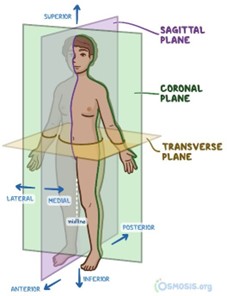
You just viewed 10 questions out of the 24 questions on the Hesi Biology Proctored Exam Exam. Subscribe to our Premium Package to obtain access on all the questions and have unlimited access on all Exams. Subscribe Now



